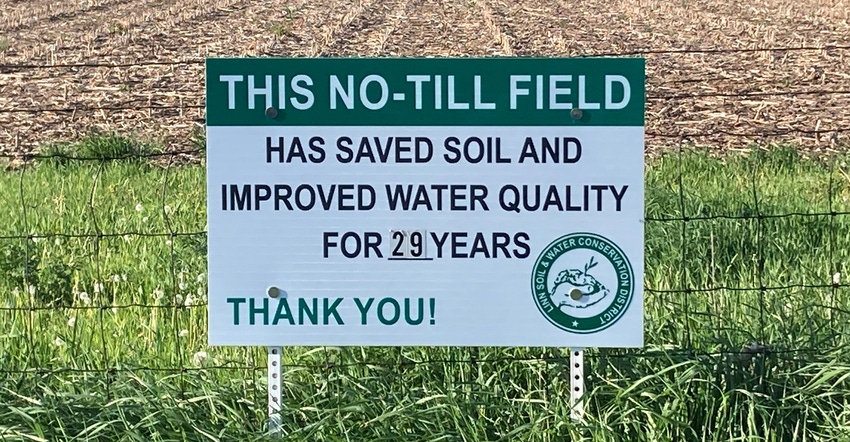
Many of you have heard the Mark Twain quote: “Buy land, they’re not making it anymore.” It’s true, and it certainly heightens interest in owning and investing in farmland. Two more factors are affecting scarcity:
Erosion. The Daily Erosion Project of Iowa State University estimates soil erosion in Iowa and surrounding states. Their studies show we’re losing the equivalent of four dump-truck loads of soil per acre per decade due to wind erosion and soil runoff. Did you see the pictures of the 100 mph winds western Iowa experienced this past May? These winds produced scenes reminiscent of the 1930s Dust Bowl.
Urban sprawl. Between 1992 and 2012, the Farmland Information Center says the U.S. lost 31 million acres of agricultural land to development. Of this, nearly 12 million acres were productive cropland acres. When you average this loss over a 20-year period, it suggests we’re losing 1 acre of productive row crops per minute due to urban sprawl and development.
Where conservation comes in
Can we continue to lose productive farmland like this? Or will technological advancements continue to increase the yields from our commodities to supply the food, fuel and fiber needed for our world population?
We’re seeing more awareness for preserving the productive cropland we currently own and operate. In fact, one of the first questions farm managers ask a prospective producer is about the conservation practices they engage. Why? Because more and more retiring farmers, landowners, inheriting landowners and even investors are looking for a tenant who is a good steward of the land.
This may go against the sentiment that landowners only care about their income. However, I can vouch to this greater focus on conservation based on our experiences in helping match prospective producers to retiring farmers and inheriting landowners who don’t have a farm successor to operate their farm.
Conservation may be important to the traditional landowner for reasons including pride and sentiment from owning a multigenerational family farm. For investors and other groups, the reasons may differ and relate to an industrywide focus for conservation. After all, about every farm magazine or online forum you read contains an article related to regenerative farming practices, cover crops and, of course, carbon credits. These are the type of practices landowners are asking about.
Farmland leasing examples
Recently I was asked to help a farm operation prepare a proposal for renting 1,000 acres. The landowner required the new tenant to use no-till and cover crops, due to the farm’s proximity to a municipality. The landowner’s ground wasn’t regulated, but the adjoining land owned by the municipality was.
The operation I worked with had 30 years of no-till experience under their belt. While creating their farm resume, they even went so far as to engage a third-party conservation group to develop a conservation “scorecard” for their operation. This is a unique example of where the traditional competitive advantage for renting farmland was changed from who is willing to submit the highest bid to what conservation and farming practices are used.
Last year, I worked with an out-of-state landowner who specifically asked that I only introduce her to prospective producers with experience in using cover crops. I often suggest a soil test to set a benchmark when working with a new tenant. In this case, she worked with the district conversationist to develop a conservation benchmark to work from.
Instead of putting her farms out to an open bidding process, she chose to set the terms of the lease upfront using a flexible land lease. The base rent was set at $75 to $100 per acre under the typical going rate. Receiving fair income was important to her, but the care of her farms was even more important.
Could we see more examples like this for renting farmland? More landowners are asking questions related to conservation. I’m also concerned that we operate in an industry where rents are set by auctions or what other neighbors are willing to pay. Rental contracts are typically set one year at a time, but most conservation programs require a much longer commitment than one year.
If conservation is important to you or to the landowner you are renting from, please consider how the terms of your farm lease complement these types of long-term goals.
Downey owns Next Gen Ag Advocates and is an associate of Farm Financial Strategies. He’s a member of the Illinois Society of Professional Farm Managers and Rural Appraisers. Email questions to [email protected]. The opinions of this writer are not necessarily those of Farm Progress/Informa.
About the Author(s)
You May Also Like






